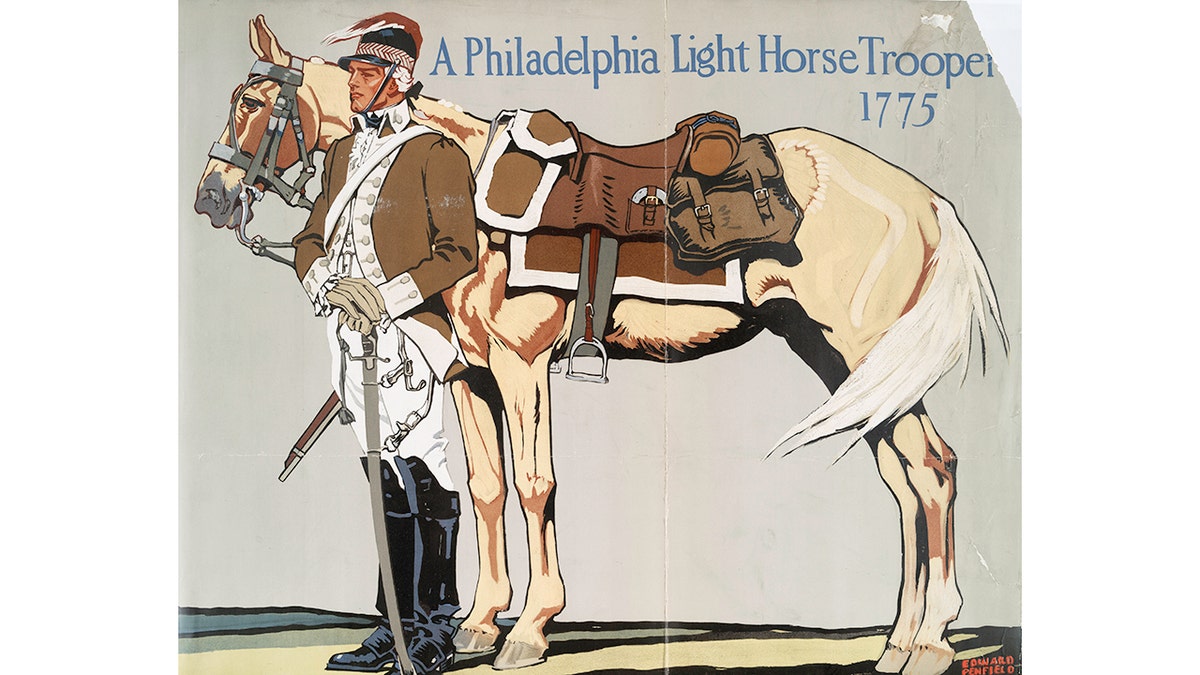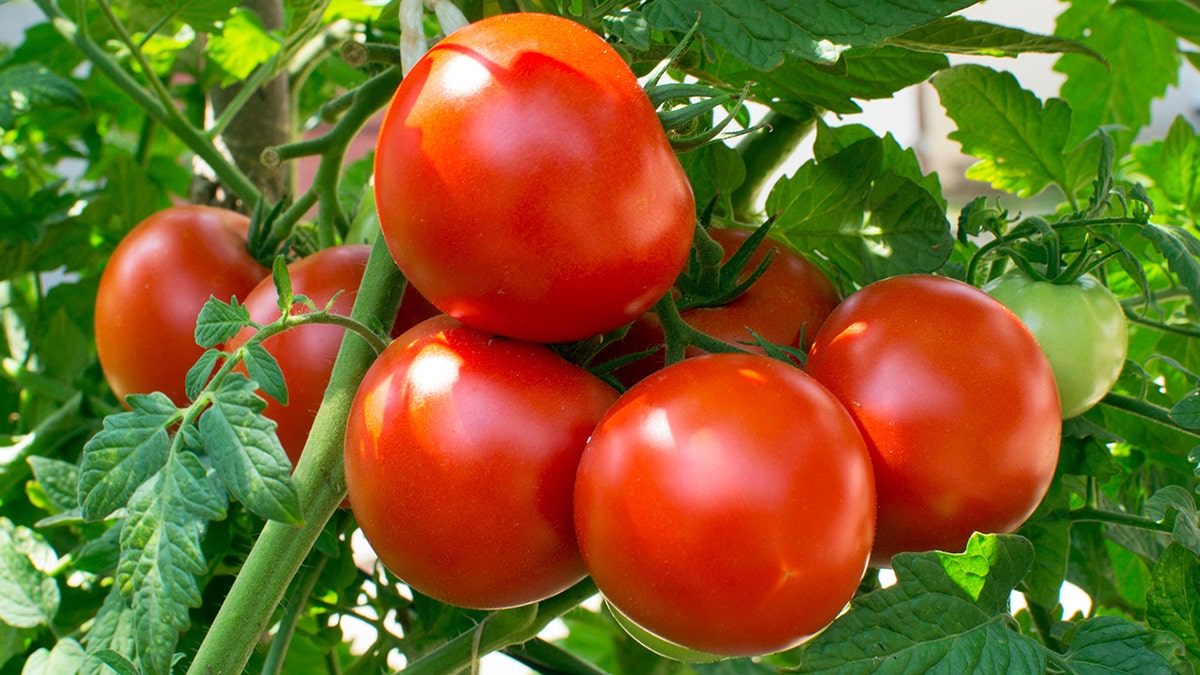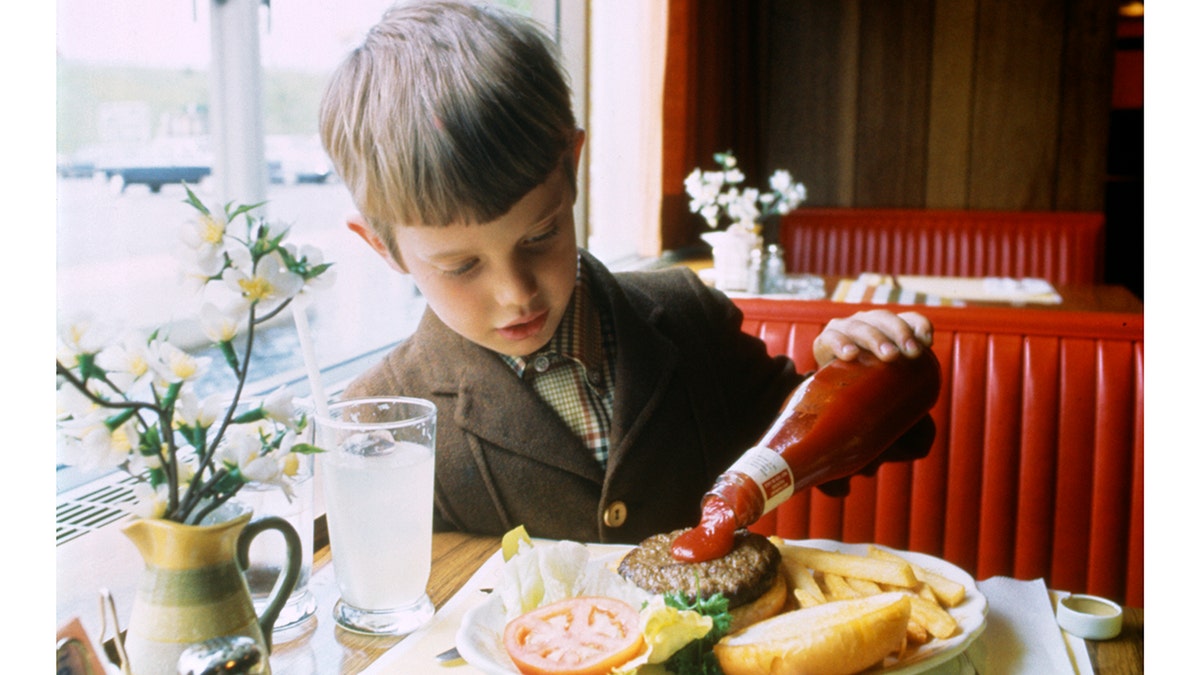A Philadelphia doctor cooked up tomato ketchup — here’s his flavorful tale
Dr. James Mease, born to a prominent, patriotic family, was a military surgeon in the War of 1812 but left his imprint on American culture when he created a new condiment for the new nation.
Americans can proudly paint patriotic cookouts with the color of ketchup all summer long.
The tomato-based condiment has been a national obsession for 200 years and comes with all-American bona fides of flavor.
Credit Philadelphia native Dr. James Mease, a scientist, author, horticulturalist, civic activist, Pennsylvania polymath — a really smart guy — and wartime military surgeon.
He also really loved "love apples." That was his term for tomatoes.
MEET THE AMERICAN WHO CREATED BUBBLE GUM, WALTER DIEMER, HOME-KITCHEN CHEMIST OUTWITTED SCIENTISTS
Mease cooked the first batch of what today we call ketchup in 1812.
"Dr. Mease was surely a prominent figure in Philadelphia during his lifetime," Anthony DiGiovanni of the Historical Society of Pennsylvania told Fox News Digital.

The man who invented ketchup, Dr. James Mease (1771-1846) of Philadelphia, was a renowned author and intellectual; he wrote voluminously on a wide range of topics. He published the first known recipe for tomato ketchup in 1812. Oil on canvas portrait by Thomas Sully, 1834. (Thomas Sully/Public Domain)
"He dabbled in many things and wrote prolifically about all sorts of topics, from medical cures, pattern farming in Philadelphia, vineyards, as well as navigation and ocean currents," said DiGiovanni.
Mease was a patriot and champion of the confident new nation.
It's only fitting that he gave the nation he loved, and served, the condiment it loves more than any other.
New nation, new flavor
James Mease was born in Philadelphia, Pennsylvania, on Aug. 11, 1771 to John and Esther (Miller) Mease.
"He wrote prolifically about … medical cures, pattern farming in Philadelphia, vineyards, as well as navigation and ocean currents."
His father was a prominent merchant and patriot who served in the Philadelphia Troop of Light Horse, a militia of cavalrymen, during the American Revolution.
The Philadelphia Troop of Light Horse accompanied Virginia Gen. George Washington in 1775 as he traveled north to take command of the ragtag army of New England militiamen laying siege to the British in Boston.

A Philadelphia light horse trooper, 1775. Publisher: Harper Publications, New York. Artist: Edward Penfield (c 1890-1907). (Heritage Art/Heritage Images via Getty Images)
The younger Mease studied medicine at the University of Pennsylvania. He emerged as Dr. Mease in 1792.
He followed in his father's footsteps in service to the nation as a military surgeon in the War of 1812, essentially, America’s second war of independence.
His intellectual interests went far beyond just the human body.
"Dr. Mease was not very extensively engaged in the practice of his profession," historian Henry Simpson wrote in "The Lives of Eminent Philadelphians, Now Deceased," an 1859 collection of biographies.

Ripe tomatoes ready to be picked in a summer garden. Dr. James Mease, the Philadelphia scholar and horticulturalist who invented ketchup, called tomatoes "love apples." (Dragan Popovic/Alamy Stock Photo)
Mease authored, edited or contributed to major intellectual works and reference books. He was devoted, most notably, to horticulture and agriculture — growing more food for a growing nation.
Mease "was a prominent member of The Philadelphia Society for Promoting Agriculture," according to the Historical Society of Pennsylvania in an online profile.
He "was a prominent member of The Philadelphia Society for Promoting Agriculture."
Americans of the era grew up with a ketchup-style condiment — or catsup, as Mease spelled it.
The sauce was similar to the ketchup he introduced to the world in pronunciation only. It was an exotic foreign flavor in the 1700s in both Europe and the American colonies.

Fresh homemade ketchup — with tomatoes, onion, hot chilli peppers, sweet red kapja peppers, garlic, bay leaves and spices. (Alina-Gianina Ciobanu/Alamy Stock Photo)
"China … was likely the original source of the condiment with something that sounded like ‘ke-chiap,’" Smithsonian Magazine reported in 2018. "It likely originated as a fish-based sauce."
Other versions were made with anchovies, mushrooms, walnuts and wine.
More spellings followed as the sauce crossed language barriers: kecap and katchup among them.
MEET THE AMERICAN WHO MADE US FLIP FOR HAMBURGERS, LOUIS LASSEN, DANISH IMMIGRANT STREET-WAGON COOK
"Katchup" was a condiment in need of an identity.
Mease knew just the fruit for the job.
Love apples and brandy
Among many intellectual and civic interests, Mease "was one of the managers of the ‘Company for the Improvement of the Vine,’ in connection with which he developed a vinegar," notes the Historical Society of Pennsylvania.

A woman in the United Kingdom pours ketchup over a cone containing a barbecue burger with candied bacon and dill gherkin ripple ice cream, made especially for an event to launch the first "National Burger Day" in London. (Jonathan Brady/PA Images via Getty Images)
The position either reflected or inspired his interest in a popular vine-growing fruit.
Love apples.
The phrase is hardly used today. But "love apples" was common in the centuries after Christopher Columbus landed in the New World for the first time in 1492.
"China … was likely the original source of the condiment with something that sounded like ‘ke-chiap.'"
The "Columbian Exchange" that followed created a dramatic revolution in worldwide cuisine. The Western Hemisphere welcomed apples, among many other new foods, for the first time.
The Old World enjoyed a sudden influx of foods from the Americas, including tomatoes. They were perceived by Europeans to have aphrodisiac qualities.

Rendering of Christopher Columbus arriving in the Americas in 1492. The Columbus landings were followed by a dramatic revolution in food culture. The Old World, among many other examples, discovered New World tomatoes for the first time. Chromolithograph by Louis Prang and Company. (Getty Images)
The French dubbed tomatoes pomme d’amour – "apples of love."
The same Romance-language root gave Italy its word for tomato, known by almost any American who's plucked tomato sauce off a supermarket shelf: pomodoro.
Mease's first reference to love apples appeared in 1804, according to the 1996 book, "Pure Ketchup: A History of America's National Condiment, with Recipes" by Andrew F. Smith.
OUTDOOR KITCHEN AND GRILLS TO KICK OFF SUMMER
Mease, noted Smith, claimed that love apples made "a fine catsup."
The doctor published the first-known recipe for tomato ketchup in 1812.
"Slice the apples thin, and over every layer sprinkle a little salt," Mease wrote in his "Archives of Useful Knowledge, Vol. 2."

A boy in the 1960s pours ketchup over his hamburger while seated in a restaurant booth. The first recipe for tomato ketchup was published in 1812. It became the most common American condiment by the late 1800s. (Photo Media/ClassicStock/Getty Images)
He continued, "Cover them, and let them lie 24 hours; then beat them well, and simmer them half an hour in a bell-metal kettle; add mace and allspice. When cold, add two cloves of raw shallots cut small, and half a gill of brandy to each bottle, which must be corked tight, and kept in a cool place."
Mease’s ketchup had a long shelf life while its acidity added bright flavor to bland foods. Yet it was neutral enough to pair with just about everything.
It exploded as a national phenomenon after the Civil War.
Ketchup gained popularity in the decades that followed, largely as an easy homemade condiment.
It exploded as a national phenomenon after the Civil War. Credit a man whose name appears in the refrigerator of almost every American home today.

Heinz ketchup is displayed on shelves at a Walmart Supercenter on Aug. 2, 2023, in Austin, Texas. (Brandon Bell/Getty Images)
Henry John Heinz improved the recipe. Ketchup became sweeter, most notably, in 1876. He patented what became his iconic Heinz bottle in 1882.
He also spelled his product "ketchup" to distinguish his product from the more common catsups of the 19th century.
Ketchup was here to stay.
The New York Tribune in 1892, according to an online report by NPR, declared that tomato ketchup was "on every table in the land."
‘Intelligent, dedicated and thoughtful’
Dr. James Mease died on May 14, 1846, and was buried in Laurel Hill Cemetery, Philadelphia. He was 74 years old.

Dr. James Mease (1771-1846) of Philadelphia. Ink wash silhouette, chalk and cut paper on paper. A prominent Philadelphia citizen, Mease invented tomato ketchup in 1812. (National Portrait Gallery, Smithsonian Institution/public domain)
"He passed a long and active life in our midst, with credit to himself and advantage to his fellow citizens," Simpson wrote in "The Lives of Eminent Philadelphians."
His vast intellect was celebrated by an impressive range of intellectual institutions, including the American Philosophical Society and the Athenaeum of Philadelphia. He’s an icon today in the world of numismatics — coin collectors.
MEET THE AMERICAN WHO INVENTED SLICED BREAD: OTTO ROHWEDDER, HARD-LUCK HAWKEYE
Mease’s voluminous writings are housed on both sides of the American continent: Duke University in North Carolina and the University of California, Los Angeles (UCLA).
"All together these papers render a portrait of a remarkably intelligent, dedicated and thoughtful individual," reports the Historical Society of Pennsylvania.

Football fan Ken "Pinto Ron" Johnson is doused in ketchup prior to a game between the Buffalo Bills and the Miami Dolphins at Highmark Stadium in Orchard Park, New York, Oct. 1, 2023. (Bryan Bennett/Getty Images)
His ketchup is an obsession more than 200 years later. Americans consume a remarkable average of 11 pounds of ketchup per year, according to industry data.
Ketchup accents hamburgers and hot dogs, potatoes and pizza. It's grown into the American version of what the French call a "mother sauce."
CLICK HERE TO SIGN UP FOR OUR LIFESTYLE NEWSLETTER
It's given birth to many other condiments, too. Shrimp cocktail, barbecue, sweet & sour and Utah fry sauce all use ketchup as a base.
So, too, does thousand island dressing.
"While ketchup is indeed an American staple — 97% of households have a bottle on hand — it’s very popular around the world, where the condiment is used in a lot of surprising ways," Smithsonian Magazine reported in 2018.

Philadelphia physician Dr. James Mease, center, created tomato ketchup in 1812. (Dragan Popovic/Alamy Stock Photo; Thomas Sully/Public Domain; Jonathan Brady/PA Images via Getty Images)
Ketchup is squirted on pizza, the magazine notes, in Lebanon and Poland; paired with pasta in Japan; and mixed with curry powder to accent streetcart wurst in Germany.
Mease, a brilliant child born to a veteran of the American Revolution — and someone who served himself in wartime and devoted his life to improving the nation — created more than a condiment.
CLICK HERE TO GET THE FOX NEWS APP
He turned the love apples of the Western Hemisphere into a worldwide ambassador of the United States.
To read more stories in this unique "Meet the American Who…" series from Fox News Digital, click here.
For more Lifestyle articles, visit www.foxnews.com/lifestyle.





















